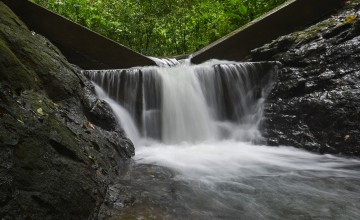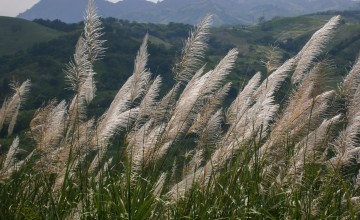
Projects and Stories
Recent Publications
Research Focus
My research focuses on the distribution of biodiversity across multiple spatial scales – globally, regionally, and locally. We use molecular tools to identify species, genetic lineages, and communities of organisms and describe how they are distributed across landscapes. Our genetic work on invasive species incorporates field and experimental studies to address fundamental issues related to invasion, impact, and restoration. Another focus is on soil and plant microbiomes. Despite their importance for global biogeochemical cycling, these microbial communities remain poorly described and our understanding of how these communities are linked to functional capabilities is limited. Our ongoing projects focus on describing soil communities across land use categories (such as land managed for agriculture, young secondary forest, and older forests) and how the structure of plant microbiomes changes across tissues and different management strategies.
Contact
Research Overview
How does genetic diversity influence biological invasions?
Many genetic traits make it possible for non-native plants to invade new environments. Knowledge of where invasive genotypes originate, how they are distributed, and how genetic diversity helps or hinders invasive species will lead to better understanding and management of biological invasions.
How do soil microbial communities influence the recovery of degraded tropical landscapes?
Soil microbes play critically important roles in ecosystem processes and the maintenance of forest diversity. Ongoing projects focus on variability in community structure of bacteria, archaea, and fungi across space and habitats using metagenomic and rRNA surveys. We work in natural forests, plantations, and agricultural landscapes to assess how land use change influences soil microbial communities and how these communities influence forest successional processes.
How can DNA inform biodiversity conservation?
Analysis of DNA provides genetic, geographic and sometimes historical answers to biological questions. We work with a variety of tissues and environmental samples to tell complex stories about the distribution of species, their spread, and evolutionary histories. Using a variety of genetic and genomic techniques we explore a wide range of topics, such as genetic diversity in endangered species, the geographic origins of invaders, the influence of climate on genetic diversity, and the evolution of disease spreading parasites.
Education
2002 Ph.D. Yale University, Ecology and Evolutionary Biology
1996 M.F.S. Yale School of Forestry and Environmental Studies
1992 B.A. Wellesley College, Biological Sciences
Selected Publications
Saltonstall, K., A.M. Lambert, and N. Rice. 2016. What Happens in Vegas, Better Stay in Vegas: Phragmites australis Hybrids in the Las Vegas Wash. Biological Invasions 2463-2474 DOI 10.1007/s10530-016-1167-5
Aiello, A, K. Saltonstall, and V. Young. 2016. Brachyplatys vahlii, an introduced bug from Asia: first report in the Western Hemisphere (Hemiptera: Plataspidae: Brachyplatidinae). BioInvasions Records 5: 7-12. DOI: http://dx.doi.org/10.3391/bir.2016.5.1.02
Sellers,A,J. K. Saltonstall, and T.M. Davidson. 2015. The introduced alga Kappaphycus alvarezii in abandoned cultivation sites in Bocas del Toro, Panama. Bioinvasions Records 4(1): 1-7. doi: http://dx.doi.org/10.3391/bir.2015.4.1.01
Kelehear,, C., K. Saltonstall, and M.E. Torchin. 2014. An introduced pentastomid parasite (Raillietiella frenata) infects native cane toads (Rhinella marina) in Panama. Parasitology DOI: http://dx.doi.org/10.1017/S0031182014001759
Bonnett, G.D., J.N.S. Kushner, and K. Saltonstall. 2014. The reproductive biology of Saccharum spontaneum L.: implications for management of this invasive weed in Panama. NeoBiota 20: 61–79. doi: 10.3897/neobiota.20.6163
Saltonstall, K. H.E. Castillo, and B. Blossey. 2014. Confirmed field hybridization of native and introduced Phragmites australis (Poaceae) in North America. American Journal of Botany 101(1): 1–5. doi:10.3732/ajb.1300298
Saltonstall, K. and Bonnett, G.D. 2012. Fire promotes growth and reproduction of Saccharum spontaneum (L.) in Panama. Biological Invasions 14: 2479-2488. doi: 10.007/s10530-012-0245-6
Saltonstall, K., P.M. Peterson, and R. Soreng. 2004. Recognition of Phragmites australis subsp. americanus (Poaceae: Arundinoideae) in North America: evidence from morphological and genetic analyses. Sida 21(2): 683-692.
Saltonstall, K. 2002. Cryptic invasion of a non-native genotype of the common reed, Phragmites australis, into North America. Proceedings of the National Academy of Sciences USA 99(4): 2445-2449. www.pnas.org_cgi_doi_10.1073_pnas.032477999


